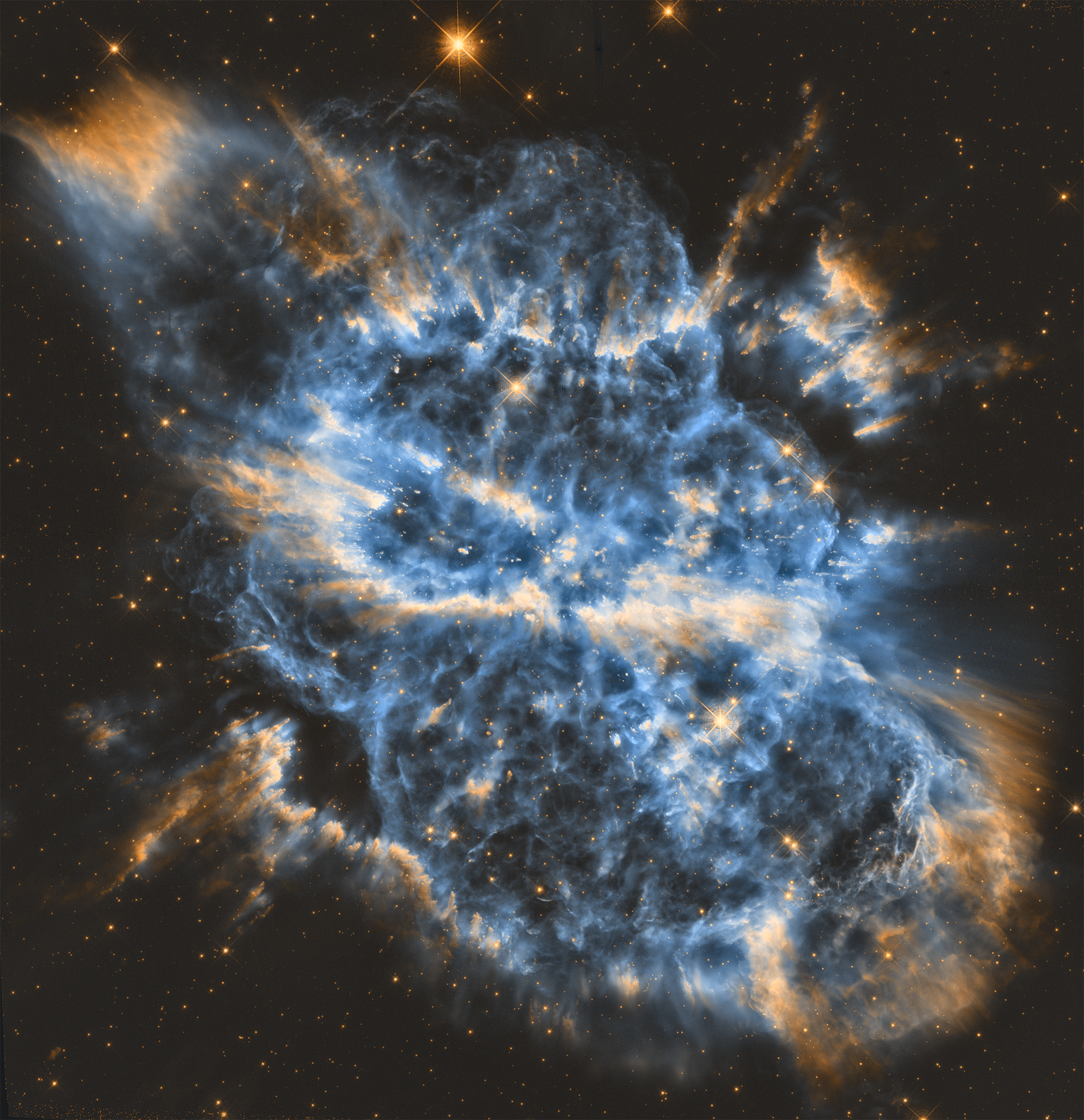Plantetary Nebula
NGC 5189

Overview
Given my recent go at some of the various Telescope Live datasets I wanted to finally take a spin at working on some of the Hubble Space Telescope (HST) collections. I learned a few years ago that NASA/ESA have made HST’s data publicly available to download and work with. I won’t lie, it took me a good while to understand how the Hubble Legacy Archive (https://hla.stsci.edu/hlaview.html) is structured and how best to understand what is what. One thing that was tricky was mapping the bandpass numbers to which filter(s) were used.
My first image to work on was of the planetary nebula NGC 5189 located in the constellation Musca. It is located roughly 3,000 light-years away and due to its unique S-shape it has been proposed by astronomers that this planetary nebula may actually be a binary star system. This narrowband image is composed, using three filters F502N (Oxygen 3), F657N (Hydrogen-alpha and Nitrogen 2), and F637N (Sulfur 2). The data was for the image was collected in June of 2012.
You can learn more about the integrations and the NASA team version at:
https://hubblesite.org/contents/media/images/2012/49/3125-Image.html